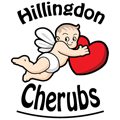Feeding at Home
How to tell if baby is getting enough
You may find your baby's feeding pattern irregular at first, but this is normal and each individual baby should be fed according to their own needs. Offer feeds frequently and your baby should stop when he or she has had enough. Babies should have plenty of wet nappies, be gaining weight (even if this is slowly) and be alert / awake for some of the time. A rough guide for weight gain is between 4 - 7 ounces per week.
Seek advice from your GP or health visitor if you are concerned that your baby is taking too much or too little milk. Also, ask advice if the time taken to complete a feed increases significantly.
Is my baby constipated?
All babies have different bowel habits and this can be affected by many different things such as a change in feeding routine, a change in type of milk or hot weather. Try not to worry if baby seems well, is not vomiting more than usual and does not have a swollen tummy. You can try offering a little cooled boiled water extra to feeds, and if that does not help and you are still concerned, seek further advice.
Weaning
This is the introduction of baby food to a baby who has only ever received milk. Weaning should occur at around 4 - 7 months from birth (not corrected age) when milk no longer supplies all of the nutrition needed for babies to grow. Signs to suggest that your baby may be ready to start weaning include:
- showing interest in other people eating
- putting things into his or her mouth and chewing on them
- seeming less satisfied with milk alone
For further information on when to wean your baby, read BLISS's 'Weaning your premature baby' leaflet.
|



